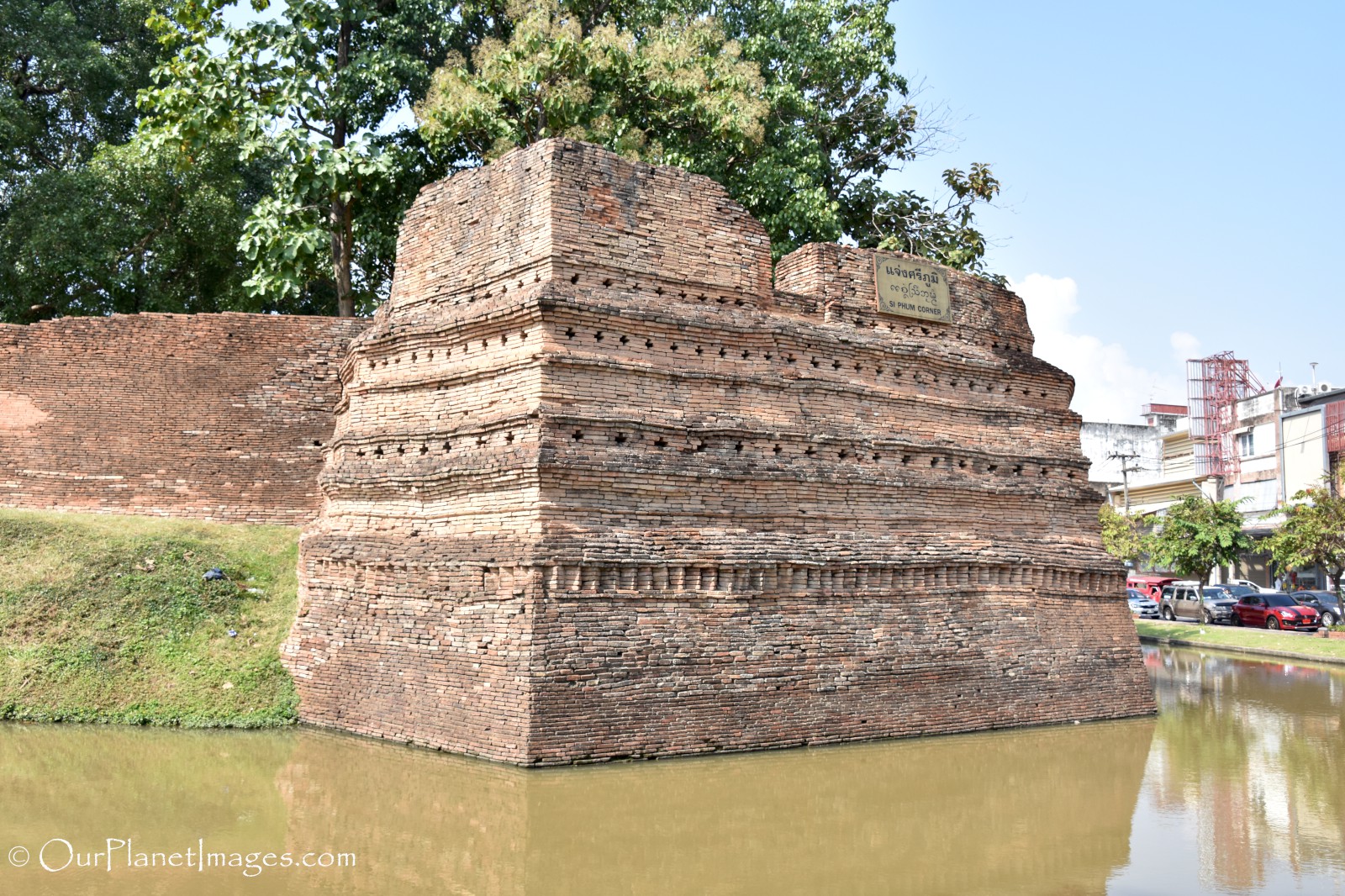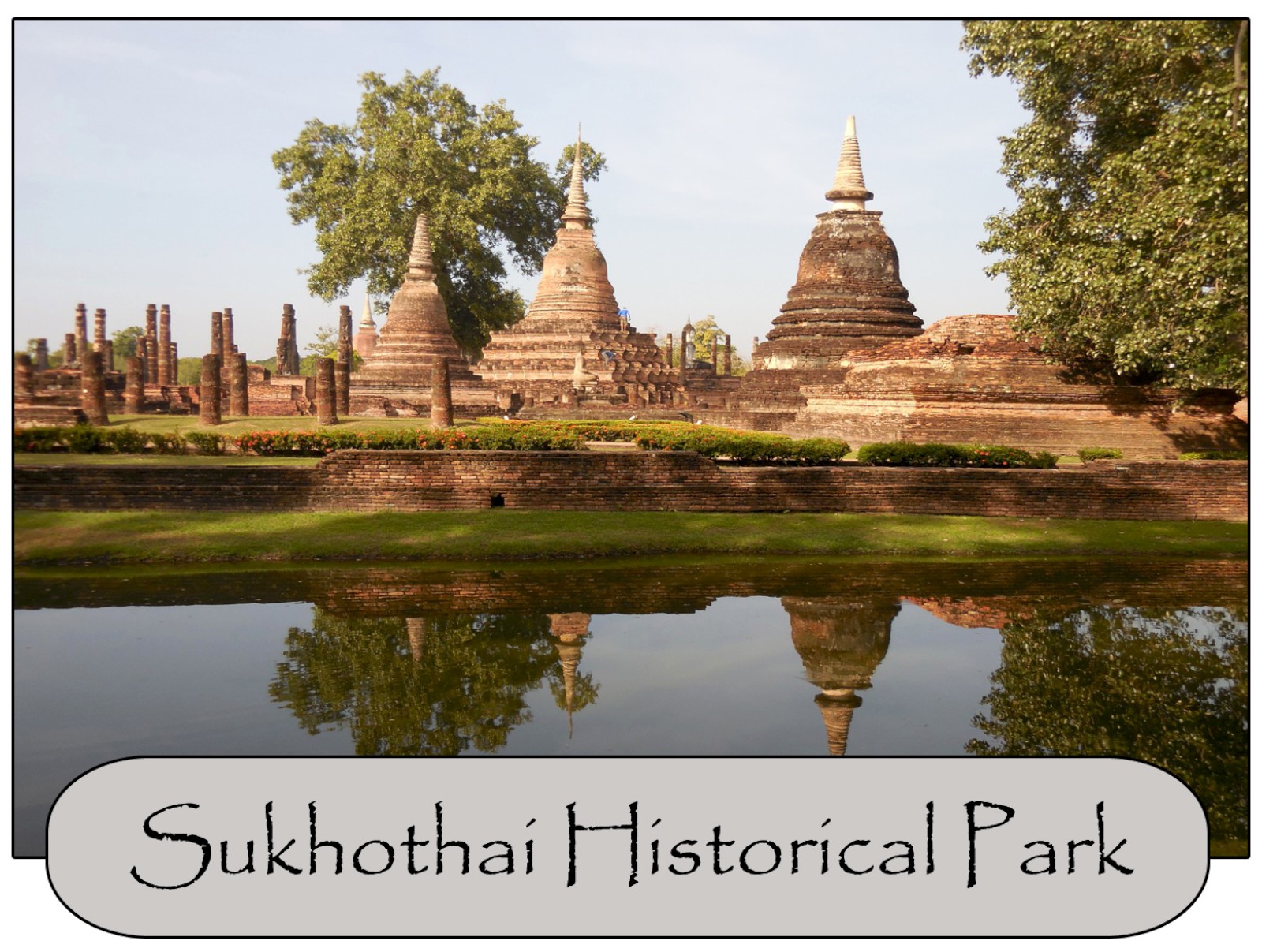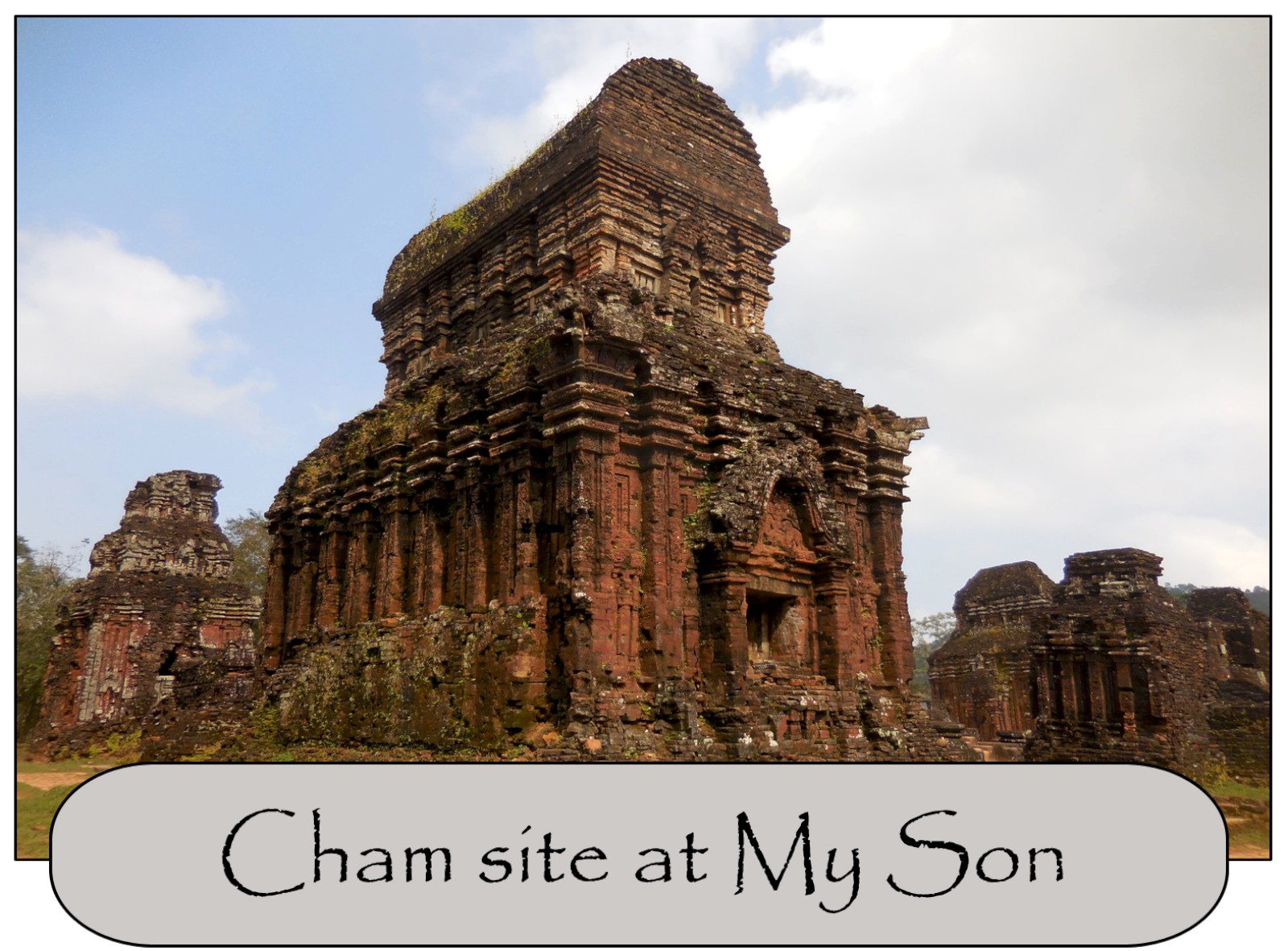The Chiang Mai ancient city walls distinguishes the old city that is now a functioning part of the new city.
The city of Chiang Mai was founded in 1296 by King Mangrai and the city was built inside a rectangle shape that was bounded by the walls and a moat. This fortress was built to protect the city from and invasion from the neighboring Thai and Burmese Kingdoms.
The 15 feet tall walls and the 60 feet wide moat that surrounded the walls protected the city from invasion for over 600 year. Inside the city walls are more than 30 temples dating back to the founding of the kingdom.
City Walls
The city is laid out in a rectangular shape of 1800 meters by 2000 meters which is approximately a 4.72 miles perimeter. The wall was built quickly in four months by 40,000 men.
The upper part of the city wall featured defensive battlements with arrow slits and narrow gaps between them. This enabled the city to be defended from invaders attempting to cross the moat.
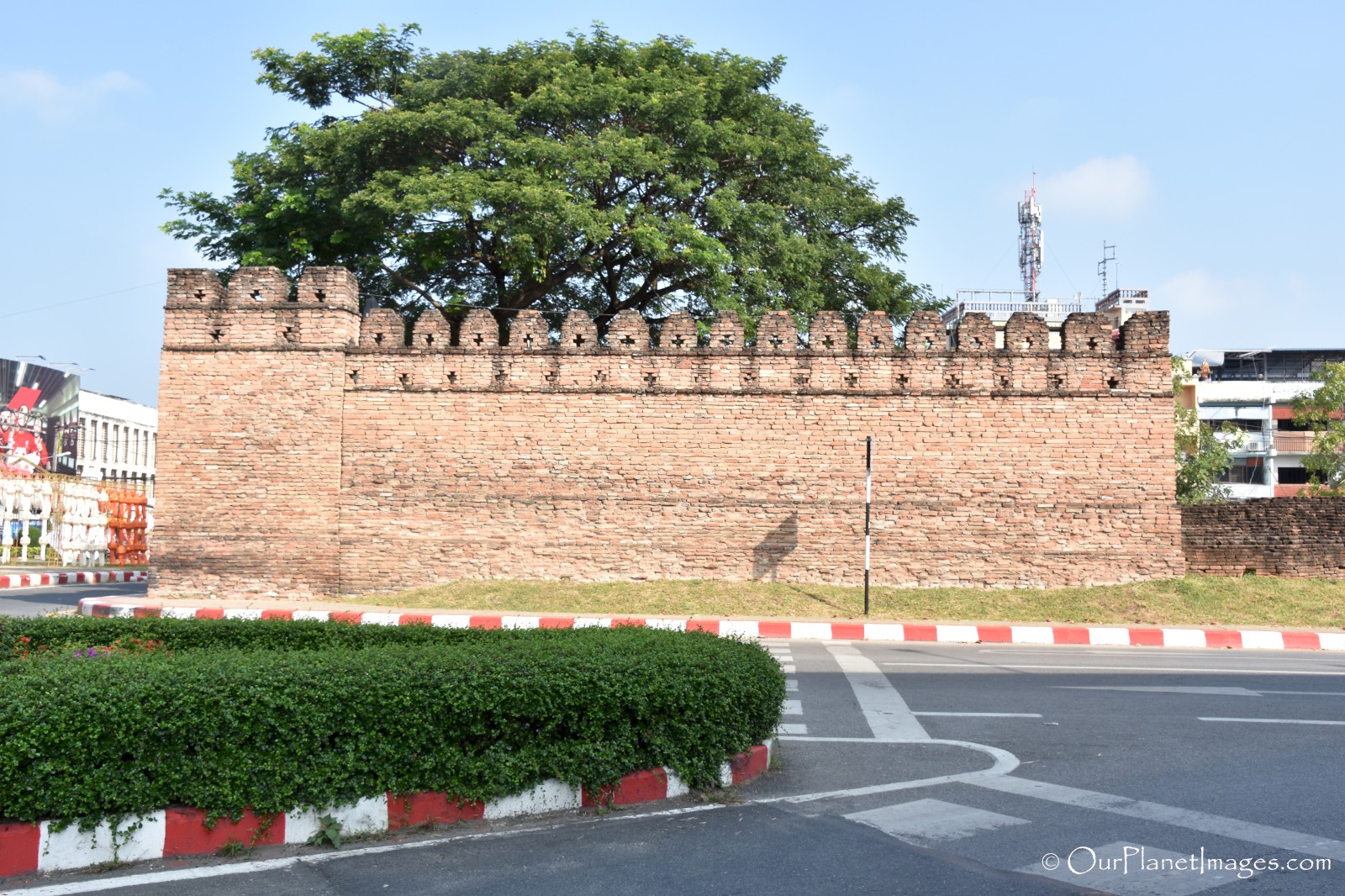
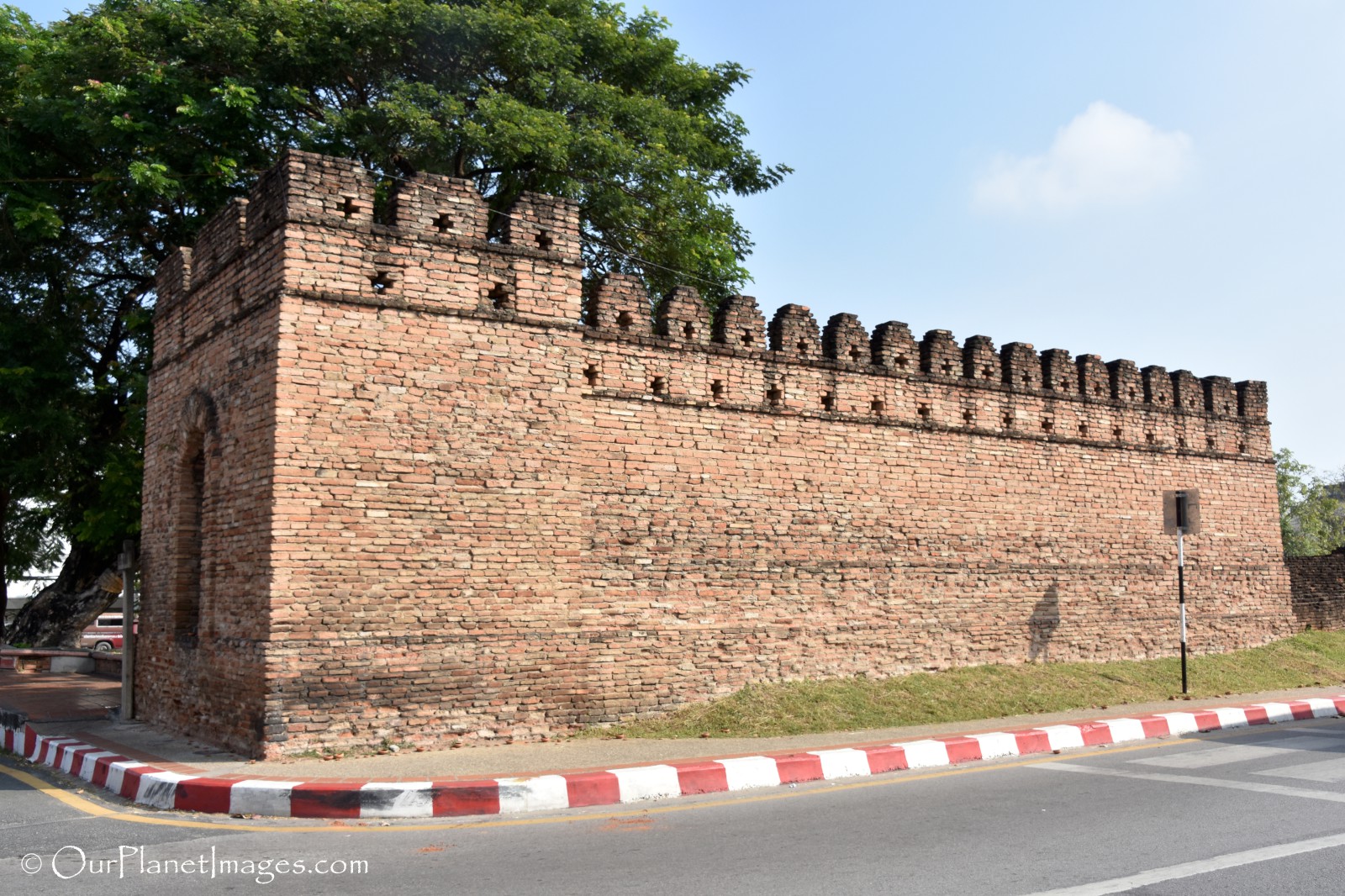
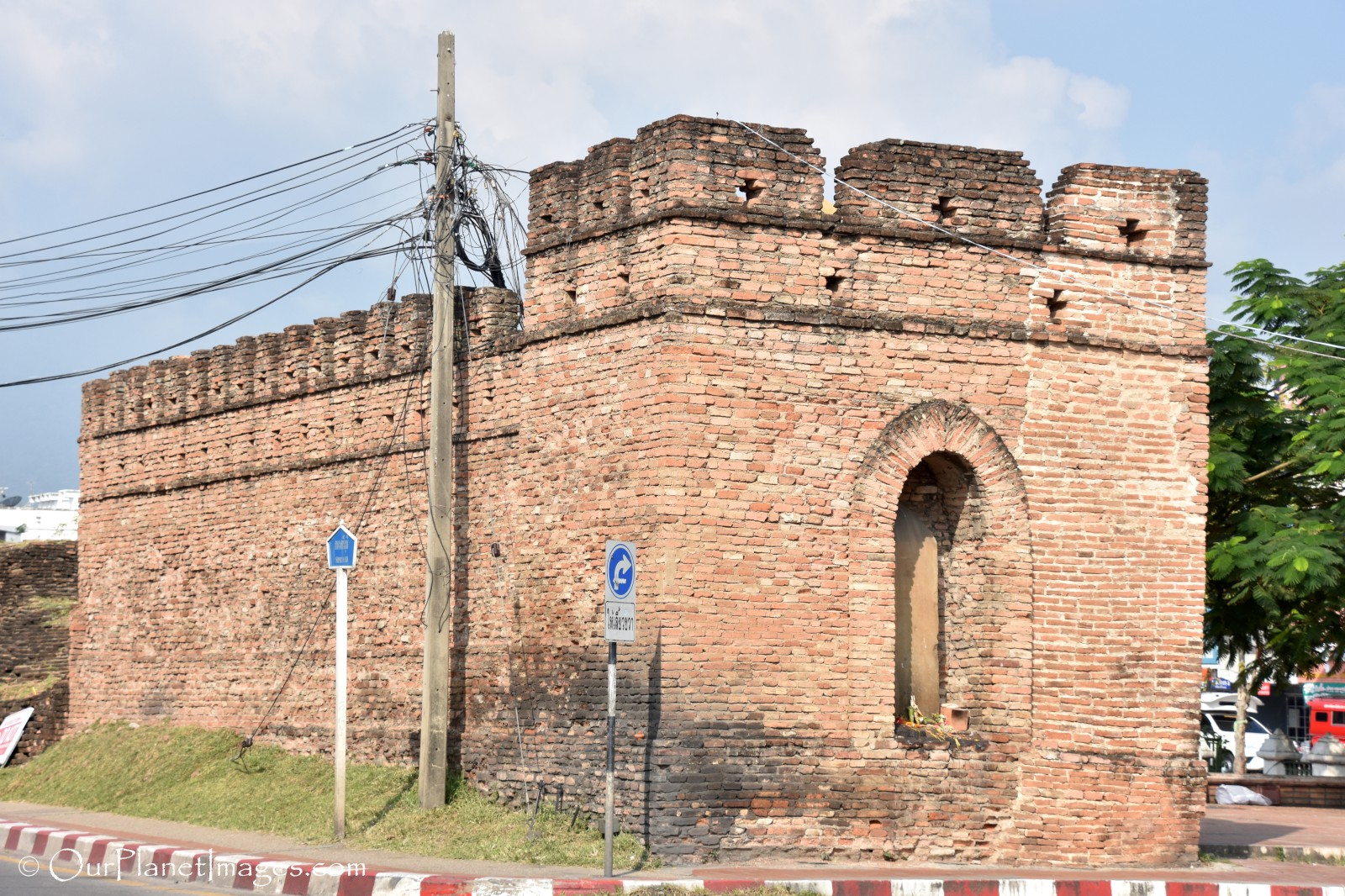
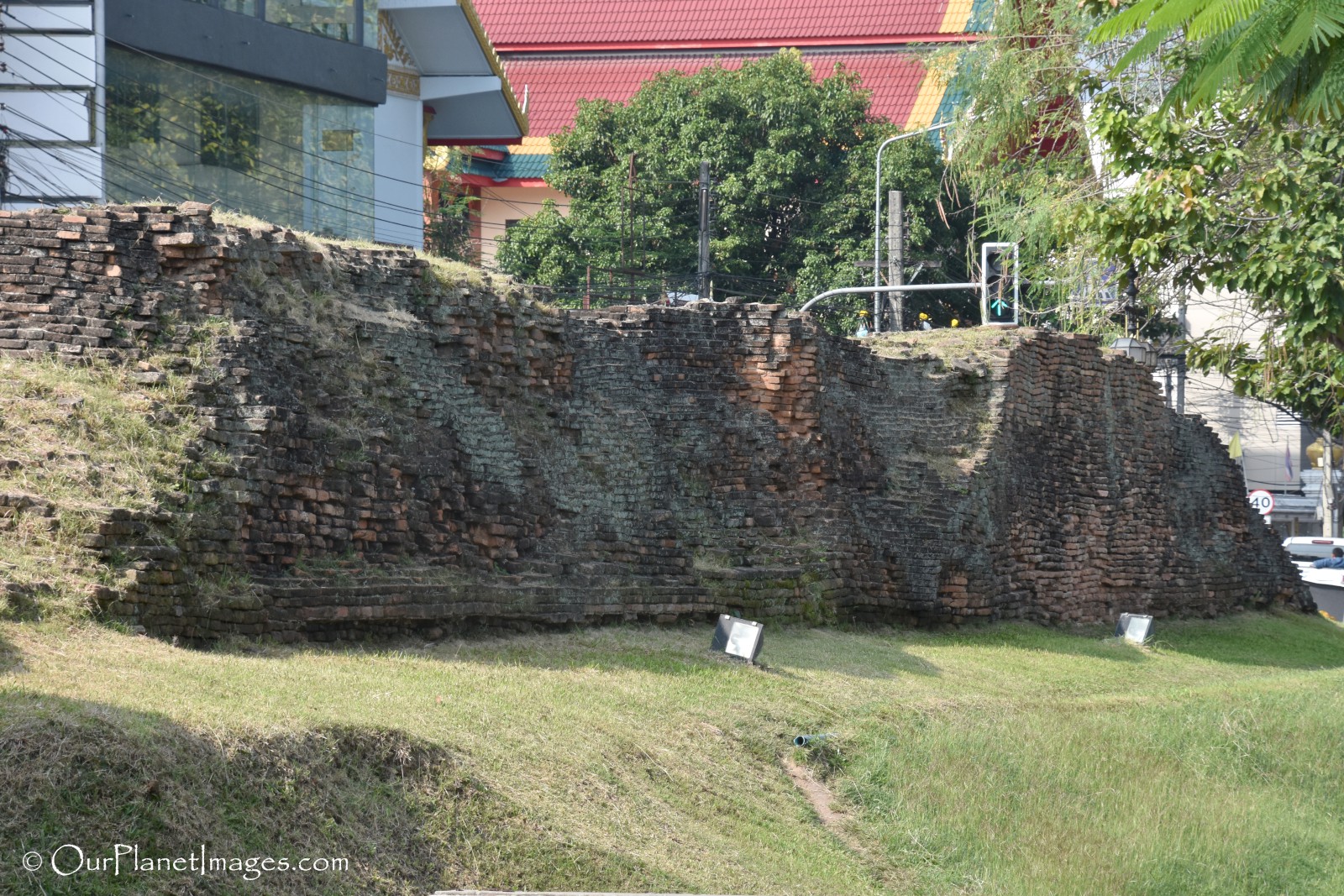
Entrance Gates
Each of the four walls had a single entrance gate that was roughly in the center of each wall. Each gate was given a name according to its location and significance to the daily life.
Tha Phae Gate (East Gate)
The Tha Phae Gate is the most famous and historically it was the main gate where the monks, traders, and diplomats entered Chiang Mai.
Today, the gate is the equivalent to the city square of Chiang Mai. There is a large open area in front of the gate where many activities, festival and celebrations are held. Some of the events hosted in this square are the Flower Festival, Songkran (Thai’s New Year), Loy Krathong and Yee Peng Lantern Festival.
The photos below are of the Tha Phea Gate from outside the city wall looking into the city.
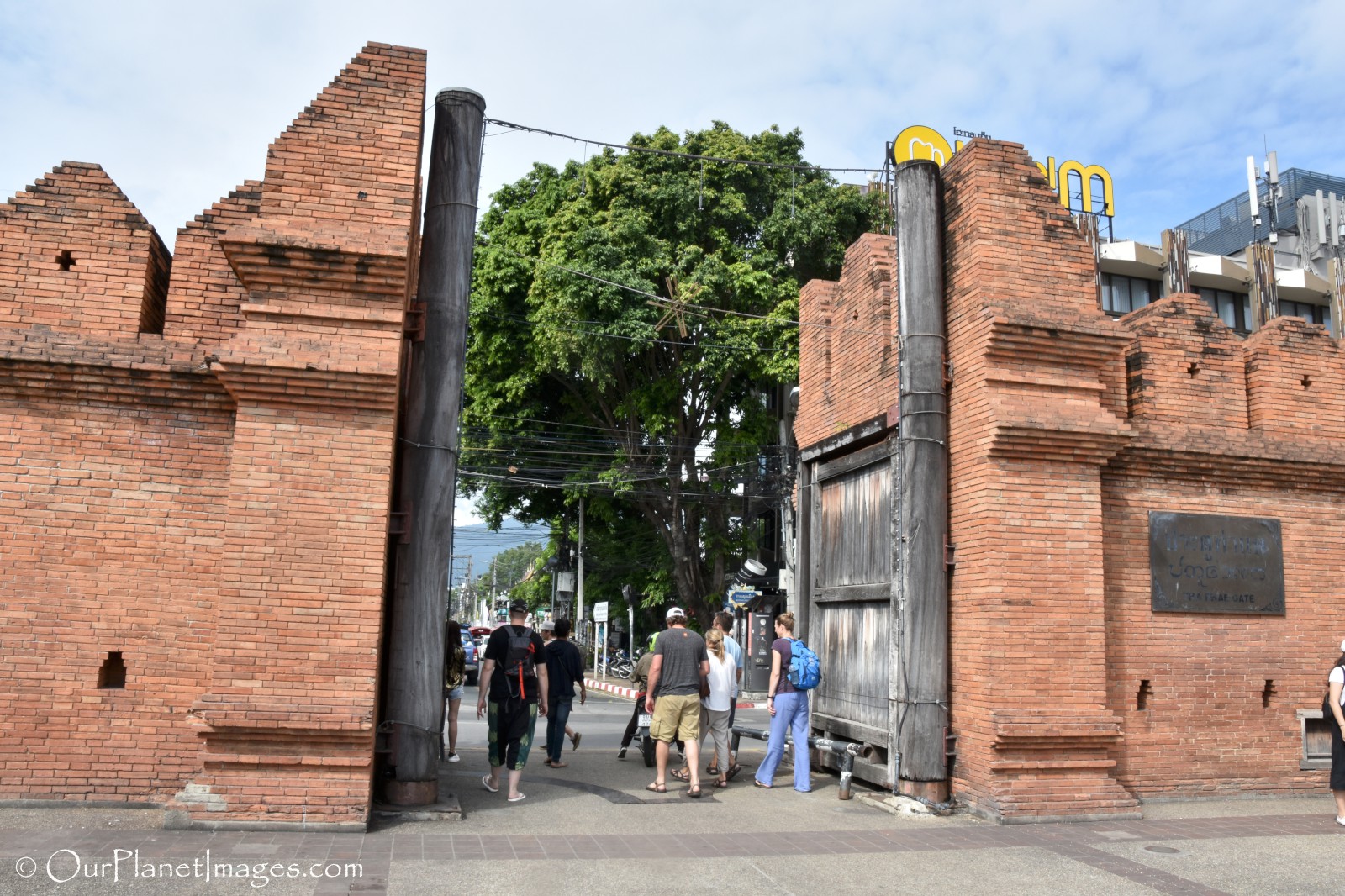
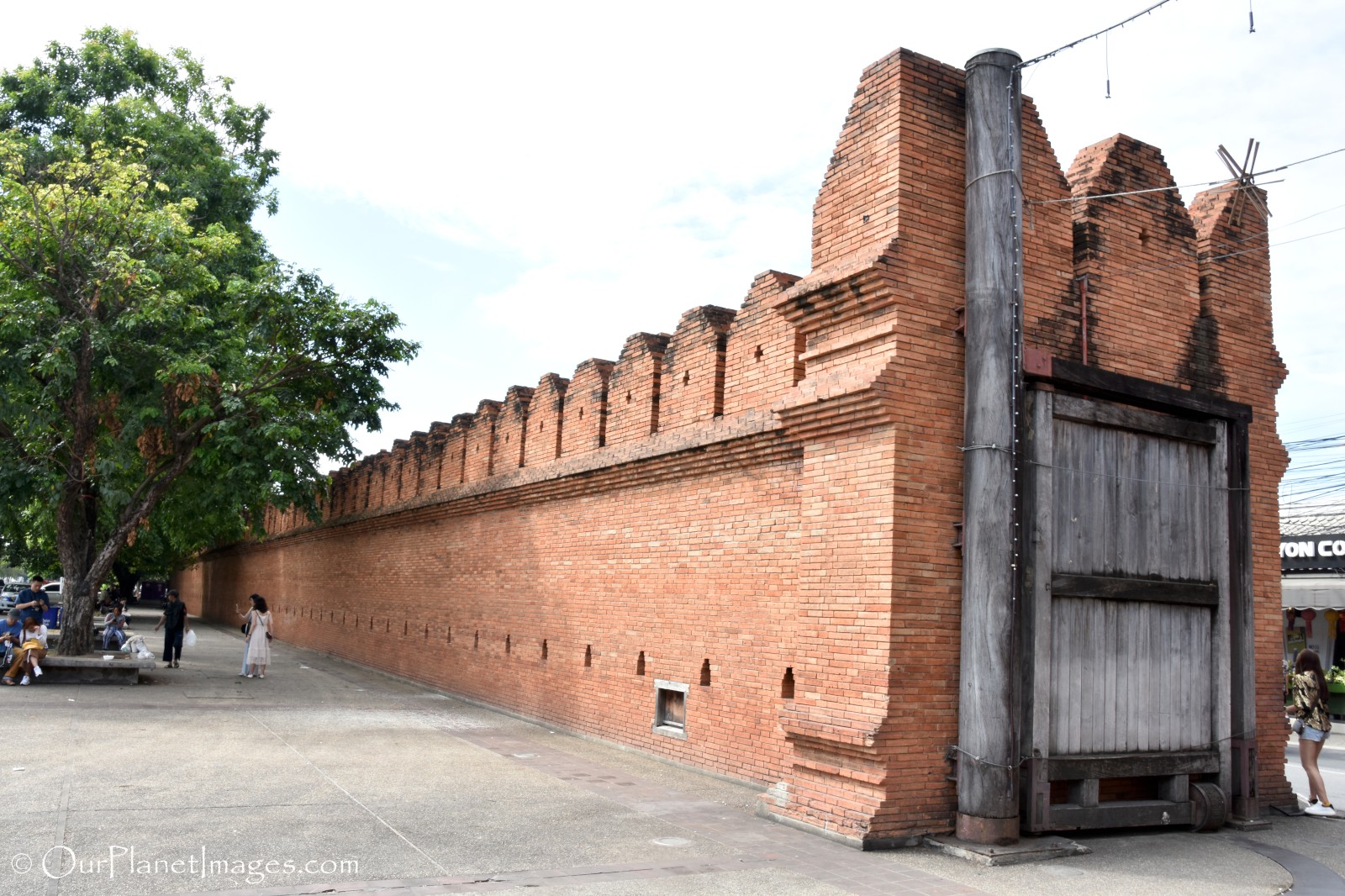
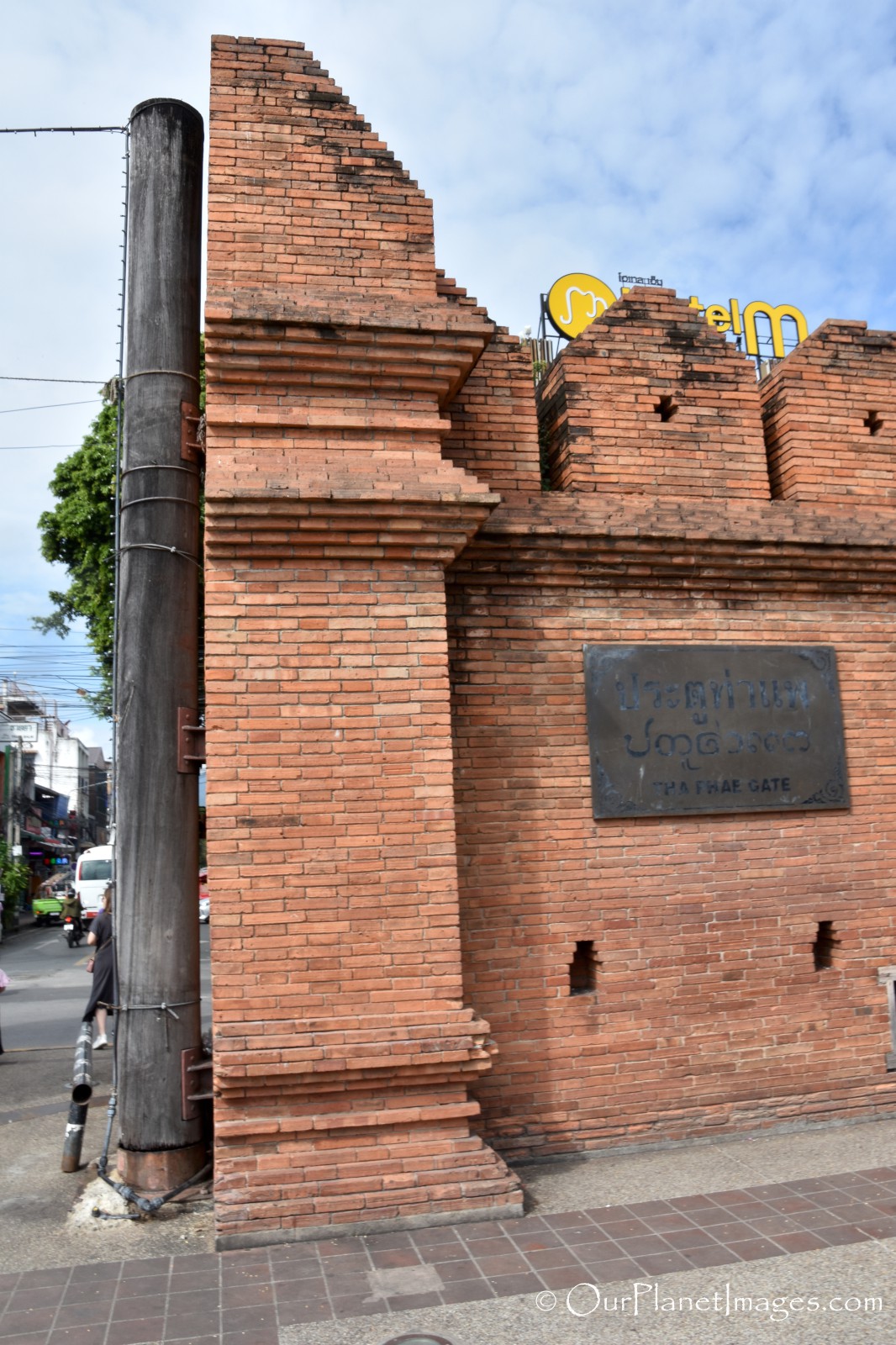
The photos below are of the Tha Phea Gate from inside the city wall. The second photos shows steps going up to the top of the wall that allowed guard to monitor the activity outside of the city walls.
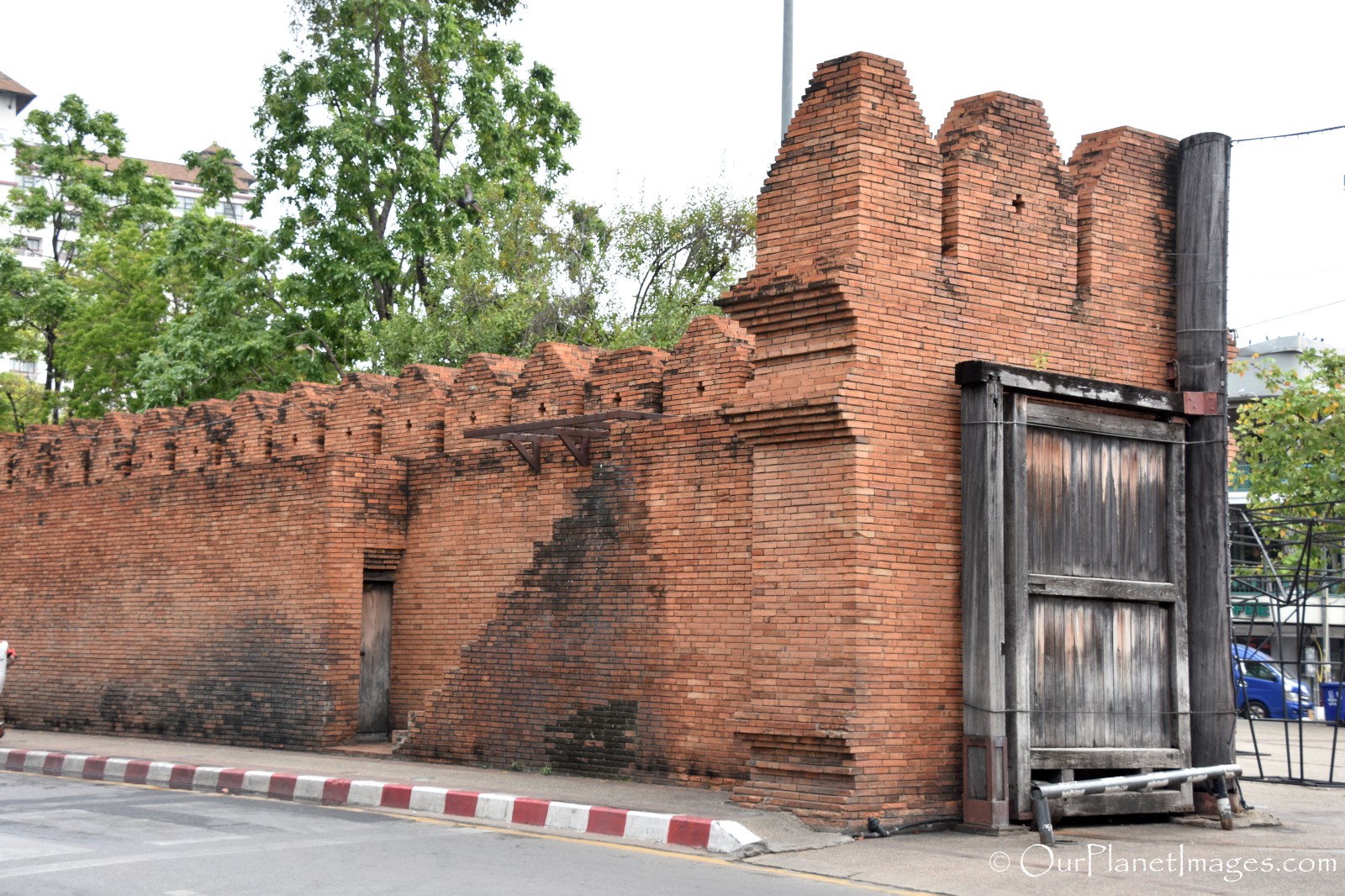
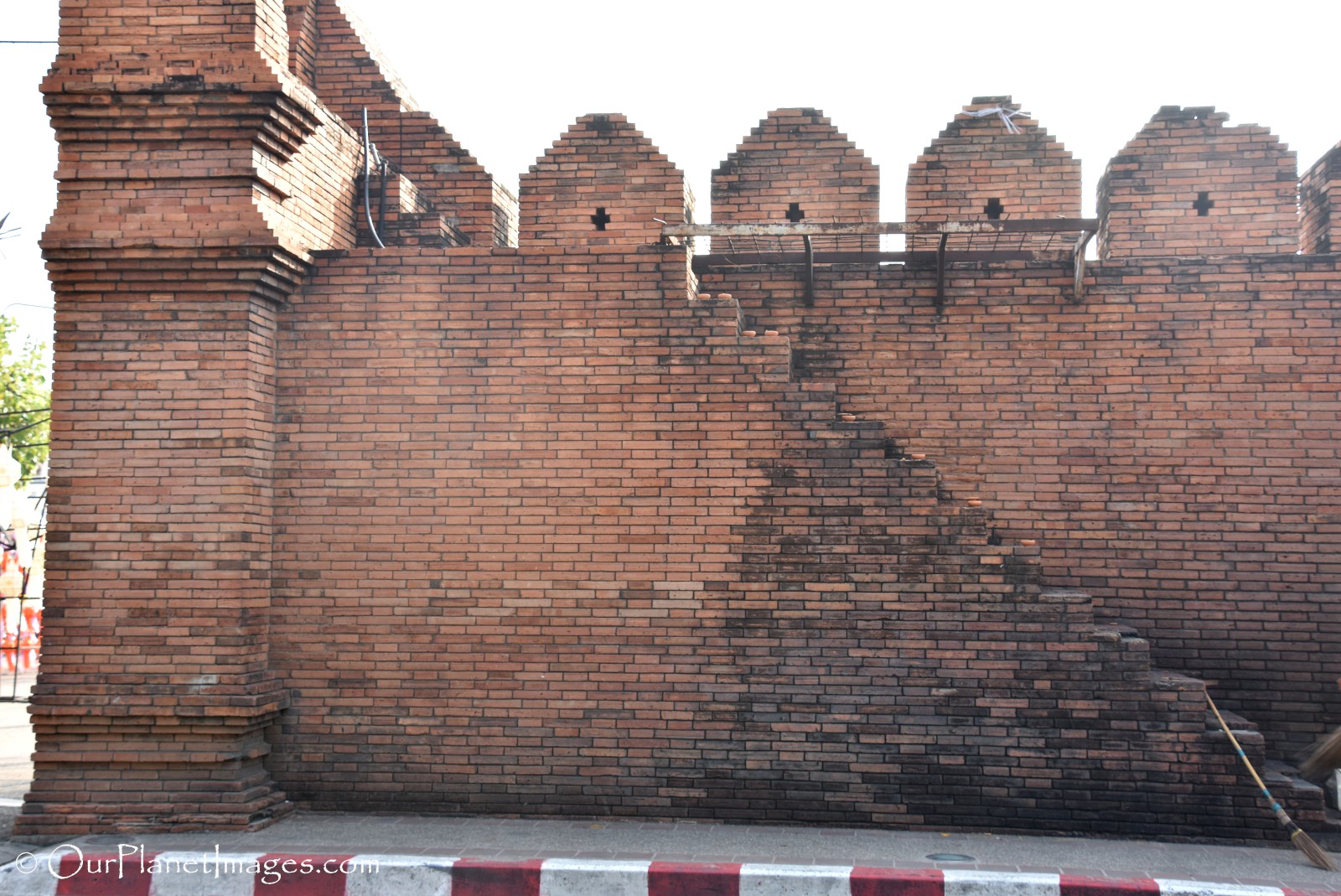
Chang Phuak Gate (North Gate)
This gate was originally named the Hua Wiang Gate because the head (Hua) of the city (Wiang) was located in this direction. Around 1400 AD a white elephant (Chang Phuak) monument was built outside this gate and name of the gate then became the White Elephant Gate. Prior to their coronation, new kings ceremoniously entered the city through this gate.
Today, this gate is famous for its night market which opens every day from 5 PM until midnight.
Note: Unfortunately a portion of the wall attached to the Chang Phuak Gate collapsed in September of 2022 during the rainy season. I am not sure of the current condition but I expect that the city will reconstruct the portion that collapsed.
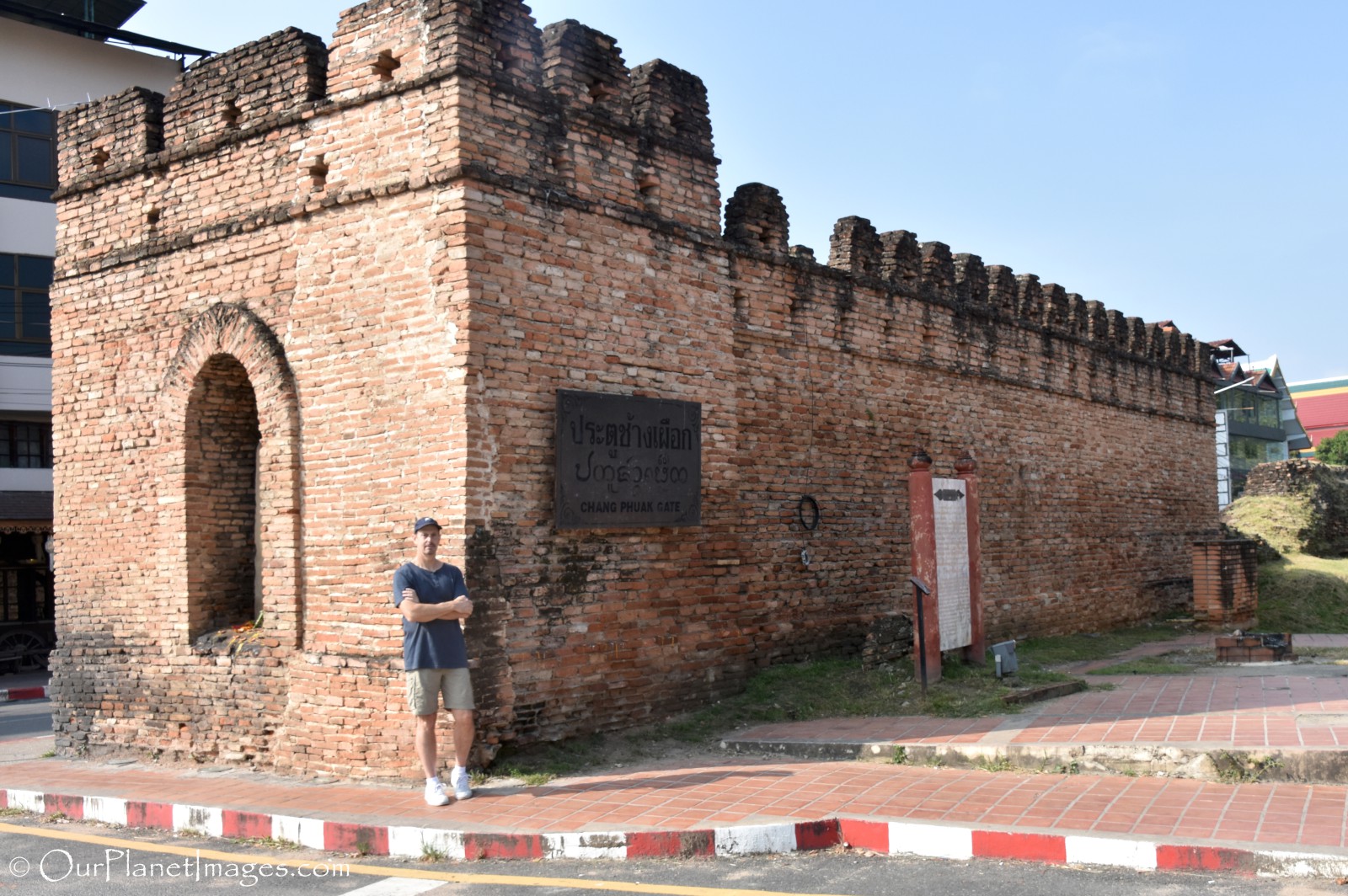
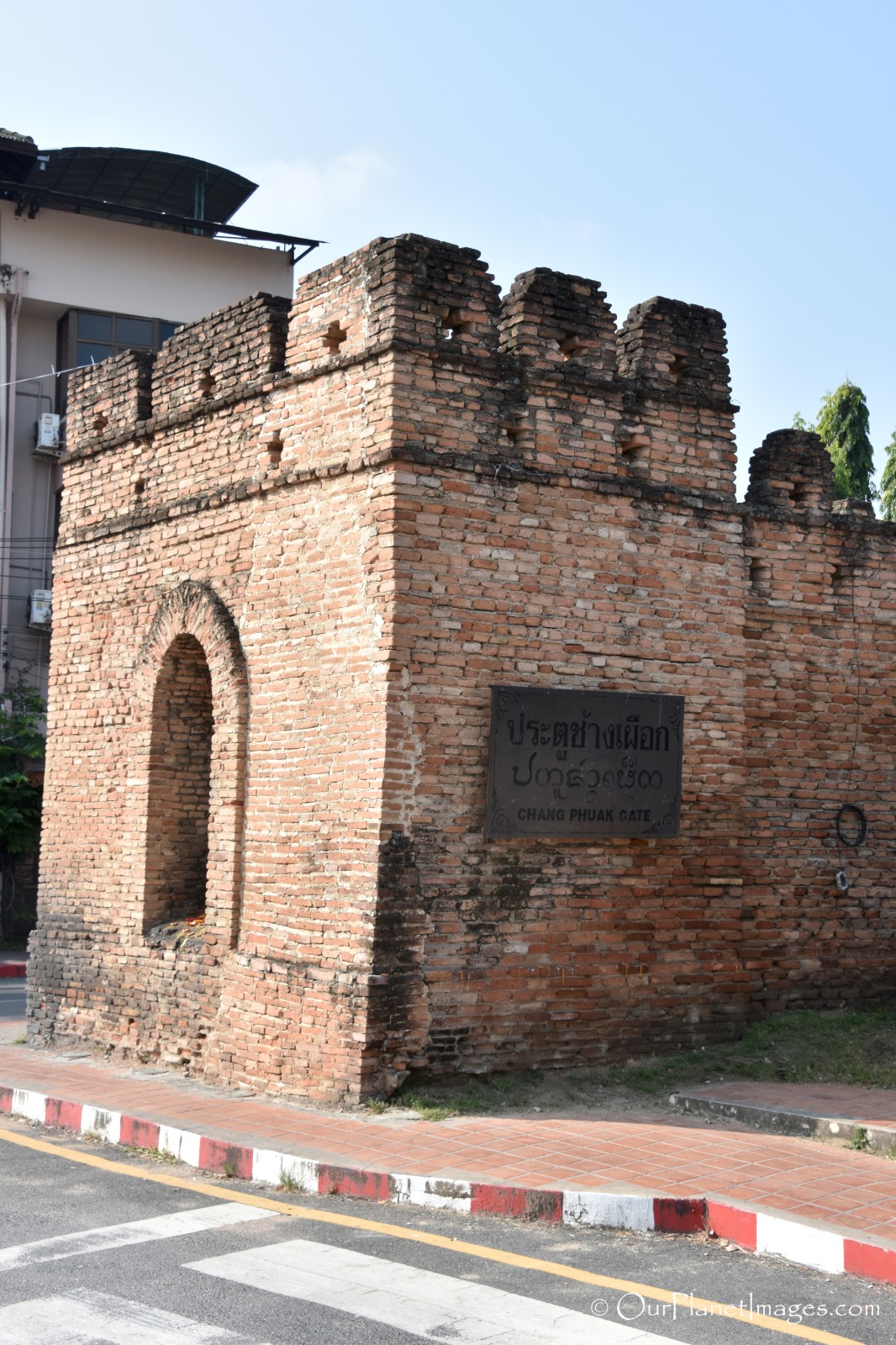

Chiang Mai Gate (South Gate)
This gate is normally calm during the day but around 6 AM some monks making their morning alms around and collecting food at the neighborhood markets. In the evening, the streets outside the fresh market are transformed into a busy night market of about 50 food stalls. This is also the starting point of Saturday Night Market.
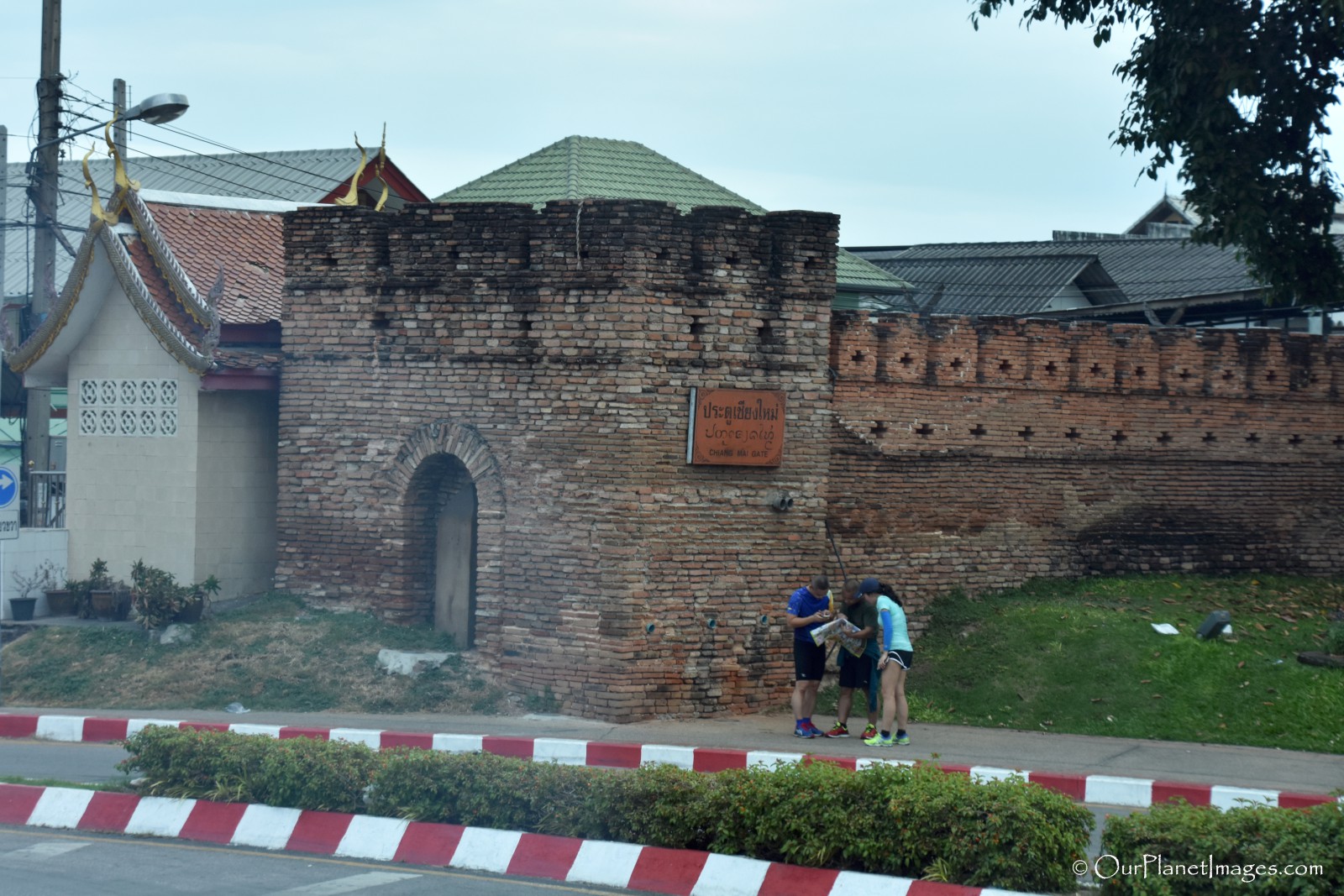
Saun Dok Gate (West Gate)
This gate is known as the “door to the flower garden”. The gate is named after the nearby temple Wat Suan Dok. The surrounding area is not very tourist compared with the gates on the other sides of the wall.
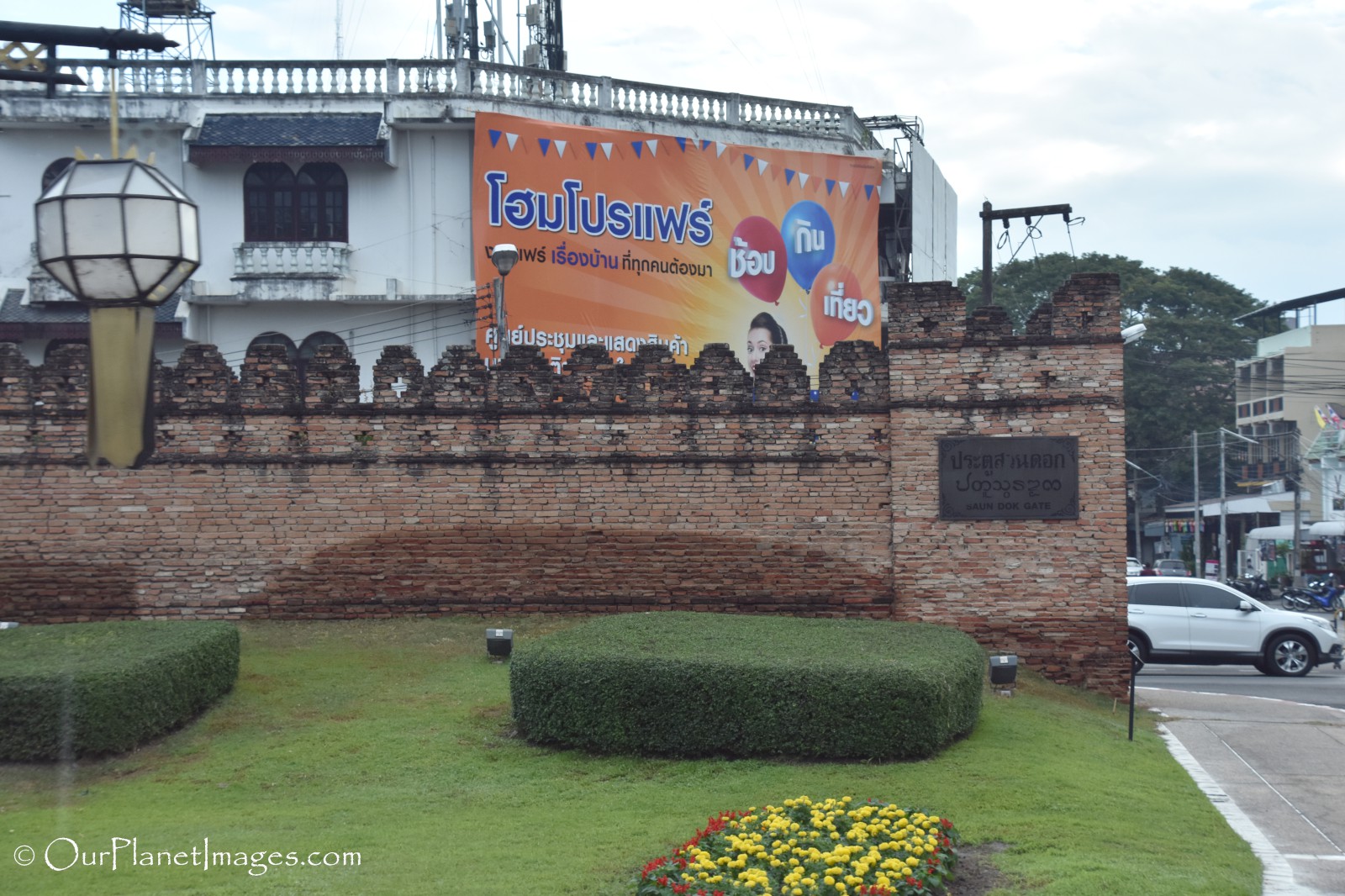
The Four Corners
Similar to the gates, each of the four corners of the city wall have a historically designated name. The names of the four corners are Si Phum in the northeast, Katam in the southeast, Ku Huang in the southwest and Huo Lin in the northwest. The photos below are of the Si Phum corner.
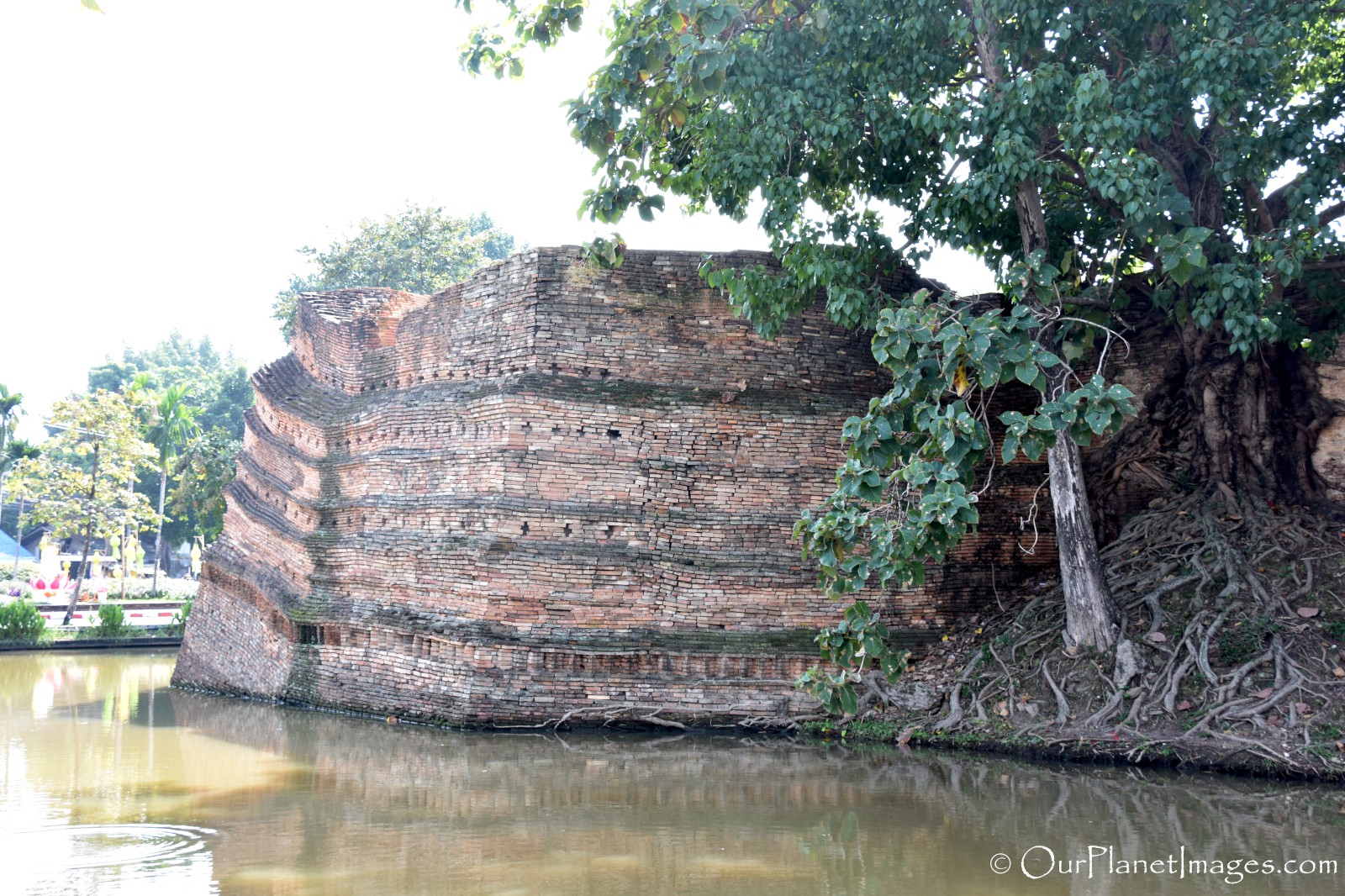
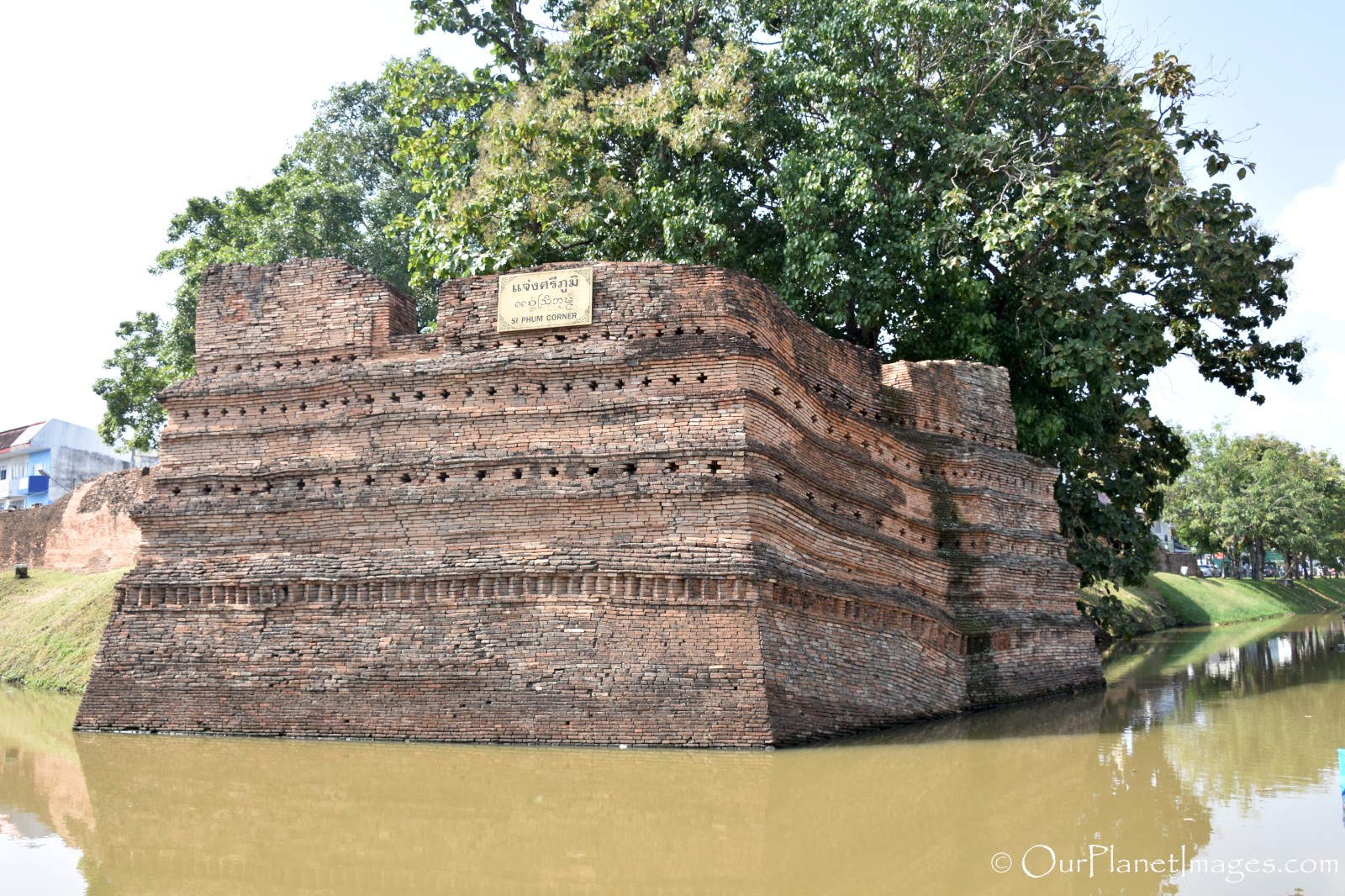
Ancient City Moat
Typical to many historical forts, a wide moat was used as the first line of defense against attacking armies. The moat that protected the old city of Chiang Mai is shown in the following photos.
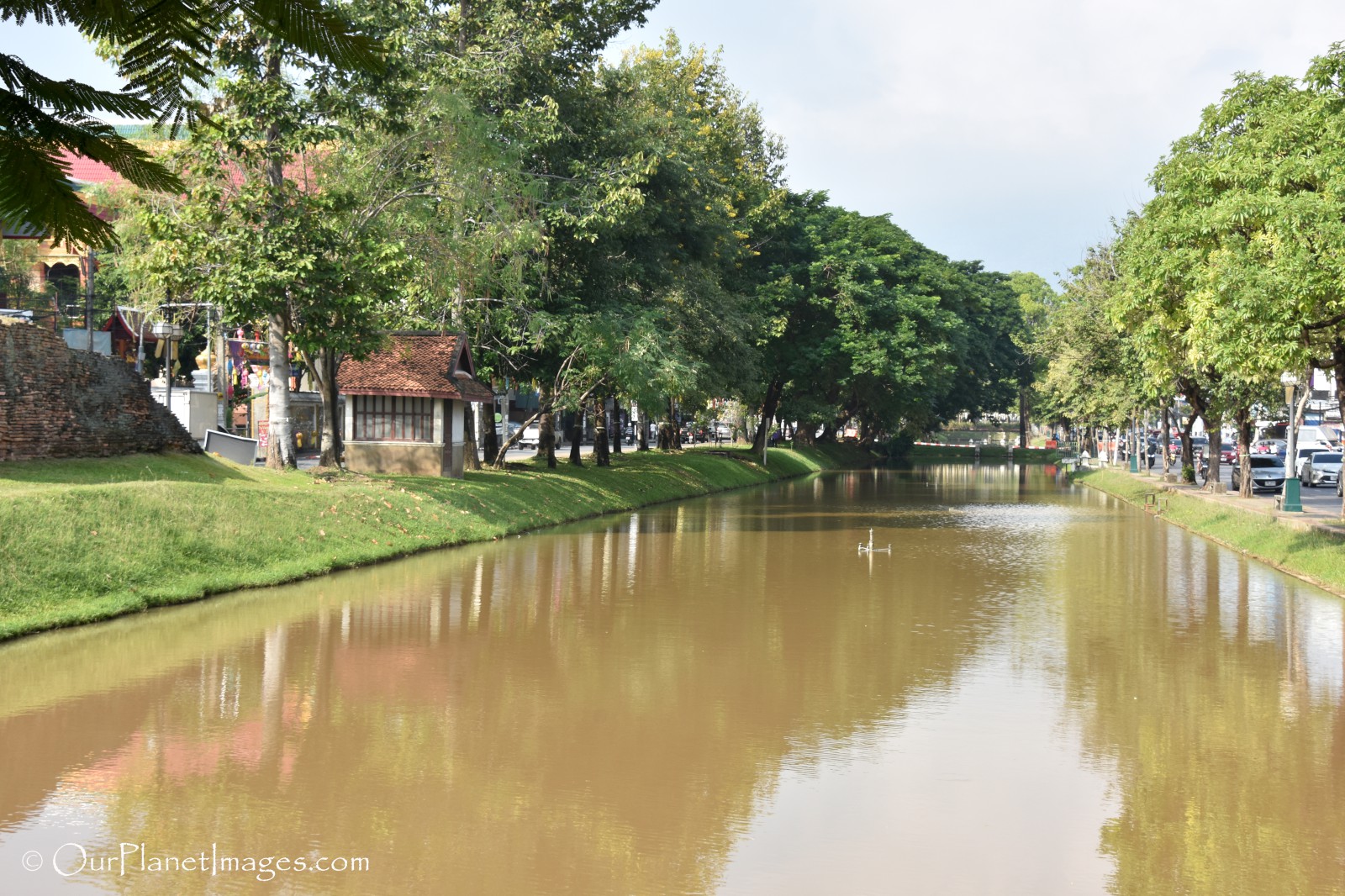
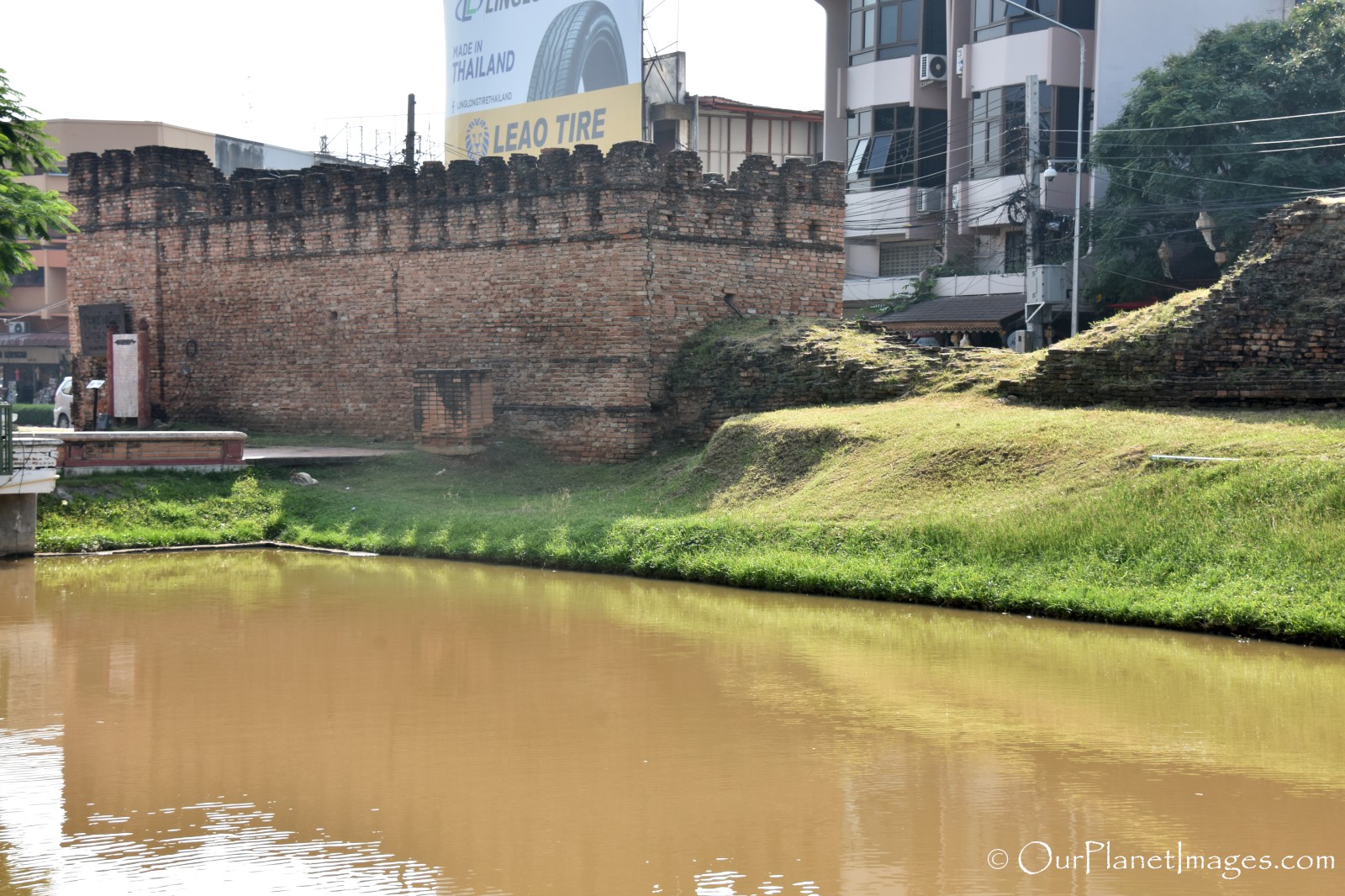
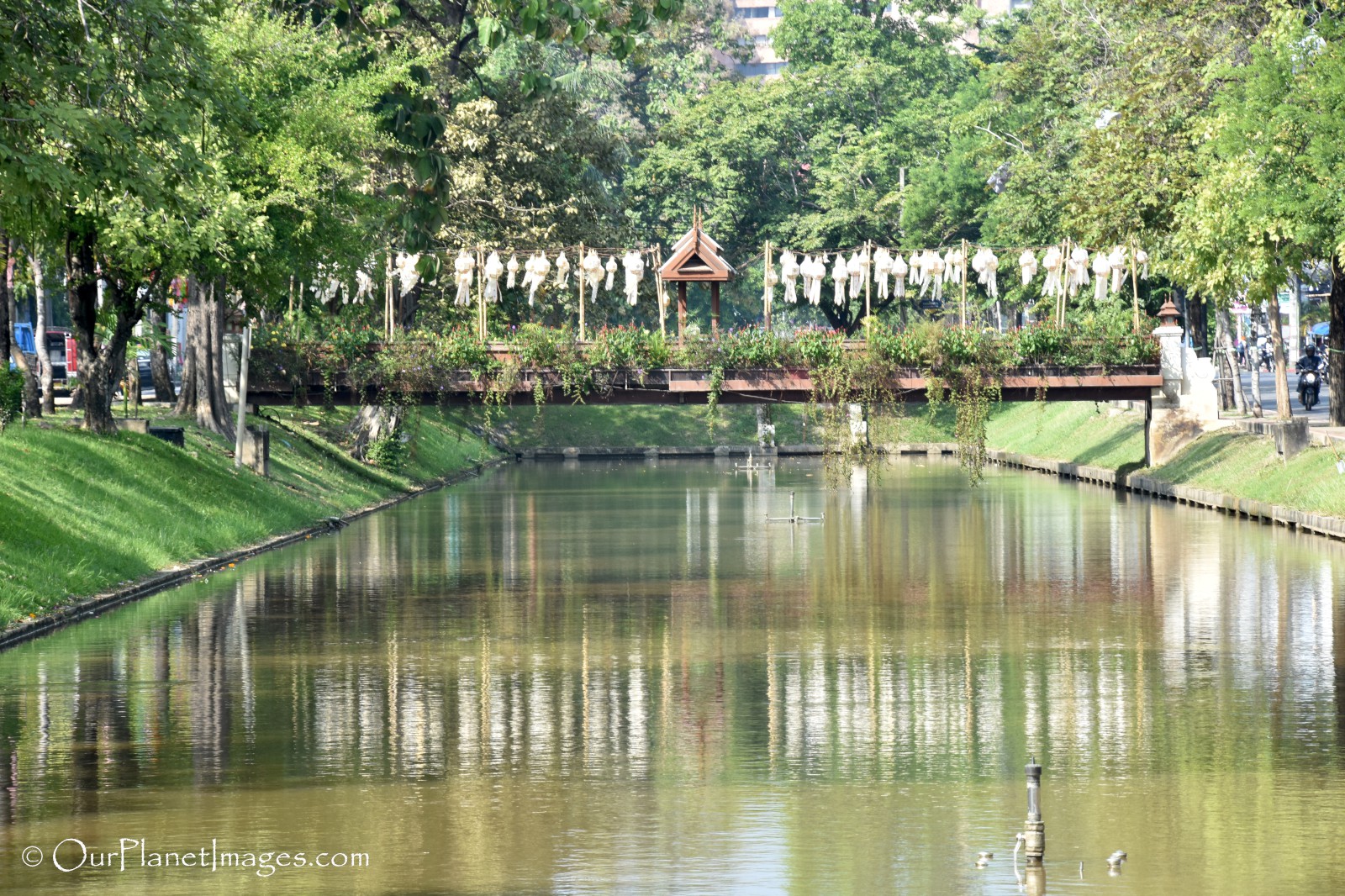
The Dust on My Shoes
Ancient sites can be found in very remote locations and in the middle of modern cities. The old city of Chiang Mai is in the center of the modern city of Chiang Mai. The city has maintained its location and continually grown for hundreds of years, the old city and modern city co-exist side-by-side.
The moat is still in place but much of the city wall was destroyed or dismantled over the centuries. Today, only the old city gates, small portions of the wall and the four corners of the city wall are still mostly intact.
The city gates are the main feature of the remaining city wall. The four corners help to see the boundaries of the city and the moat shows the defensive border of the city.
The wall is not in pristine condition but the main features are in sufficient condition that it is easy to see how the city must have looked hundreds of years ago when it was built.
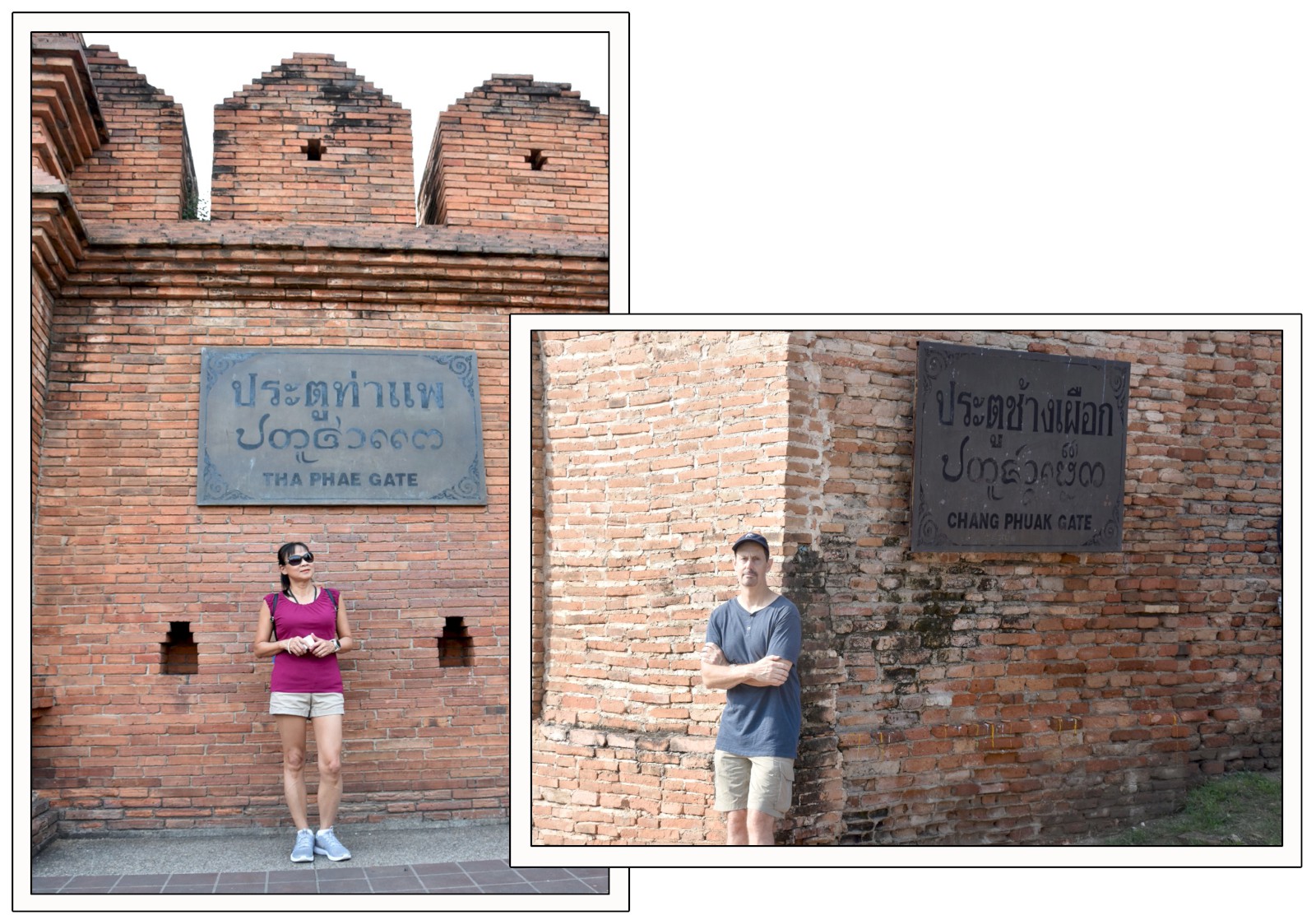
Ancient sites are seldom in excellent condition. Visiting these sites is not about seeing them the way they were in their original condition. It is about being able to walk in the place where they existed and having enough of the original structure to be able to envision the society that lived there.
For me, seeing palaces that actually show their age is how to truly experience historical places!
